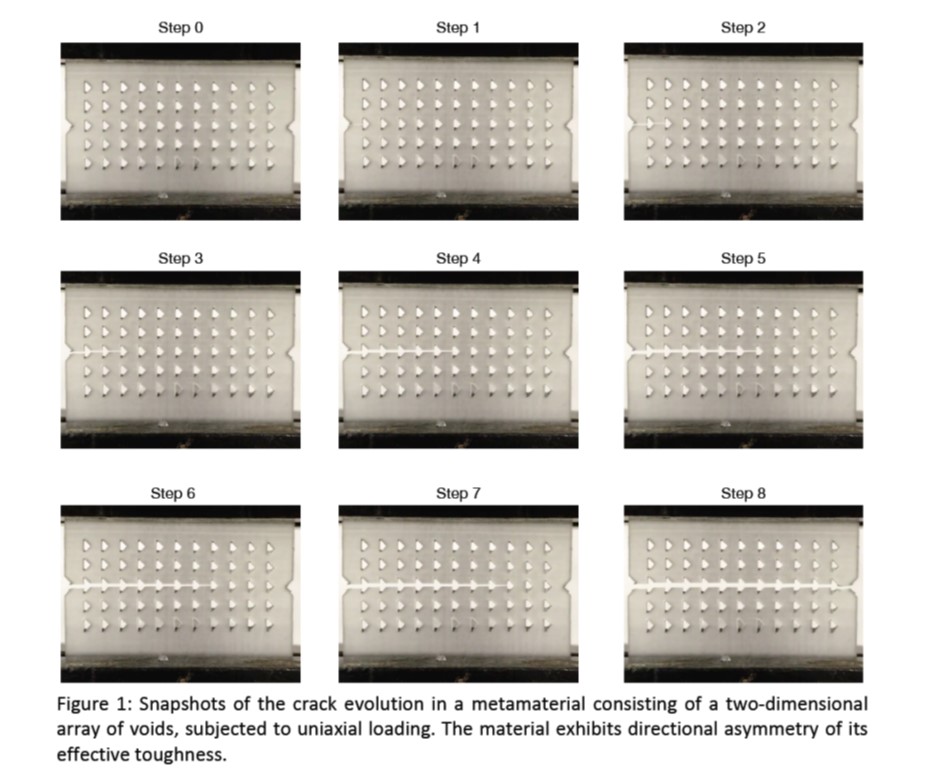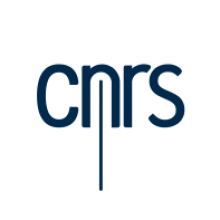Fracture Diodes: Directional asymmetry of fracture toughness
N. R. Brodnik,1,† S. Brach ,2,† C. M. Long,3 G. Ravichandran,3 B. Bourdin ,4 K. T. Faber ,3,* K.
Bhattacharya3,*
1Department of Mechanical Engineering, University of California, Santa Barbara, California 93106, USA
2Laboratoire de Mécanique des Solides, EGcole Polytechnique, 91120 Palaiseau, France
3Division of Engineering and Applied Science, California Institute of Technology, Pasadena, California 91125, USA 4Department of Mathematics, Louisiana State University, Baton Rouge, Louisiana 70803, USA *Corresponding authors. †These authors contributed equally to this work.
It is not uncommon for materials to exhibit anisotropy in their mechanical properties. This is for instance the case of both natural (e.g., wood) and artificial (e.g., fiber-reinforced materials) composites, where the medium inherits its anisotropy from the orientation of the heterogeneous microstructure. However, directional dependency is generally centro-symmetric,
in the sense that the property is invariant with reversal of direction.
Interestingly, nature provides various examples where this symmetry is broken. Textured surfaces allow butterflies to shed water from their wings, striders to run on top of the water’s
surface, and plants to collect life-sustaining nutrients with their leaves. Although remarkable, all
these examples concern interfacial phenomena.
In this Letter, we show that directional asymmetry extends to bulk phenomena, and in particular, to fracture. We demonstrate through theory and experiments that the fracture toughness (i.e., the material resistance to fracture) can be asymmetric: the resistance of a medium to a crack propagating from right to left can be significantly different from that to a crack propagating from left to right. Such asymmetry is unknown in natural materials, but we show that it can be built
into artificial media through the proper control of microstructure. This led us to the design of “Fracture Diodes”: metamaterials with asymmetric fracture toughness and whose microstructure rectifies crack propagation along a prescribed direction.
This concept is demonstrated in Figure 1. A 3D-printed metamaterial comprising arrays of voids
is loaded in uniaxial tension. Even though the specimen and loading are symmetric on a scale large compared to that of individual voids, the crack propagates from left to right indicating that
the effective toughness is significantly smaller in one direction compared to that in the other.
Importantly, that such asymmetry arises from the enhancement of toughness in one direction
rather than by the embrittlement in the other direction.
The observed asymmetry in toughness opens the way for new technological applications, where
fracture – when unavoidable – can be guided through pre-designed paths and directions.
This control can be exploited to build resilience in structures, by shielding sensitive components or by guiding cracks away from critical regions. In other words, “Fracture Diodes” enable us to
prescribe the failure path when failure is inevitable.


